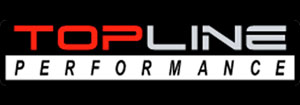And, over the last decade, has been at the forefront of creative technologies, developing data-driven design automation tools using algorithmic design methods and leading-edge analytics.. Much of Bryden Wood’s focus is on producing high-performing models for accelerating and.
This is because cooling towers utilise evaporative cooling where water and air mix, improving heat exchange compared to the limitations of a dry air cooler coil.It's worth noting that cooling towers range in height from 4 to 8m tall compared to up to 3m of height for DAC and HDAC, which helps to improve the capacity of the cooling tower.. DEC & IAC units:.

While achieving low approach temperatures, their heat rejection capacity per unit volume is typically lower.This is because they rely solely on air cooling, and air has a lower specific heat capacity than water.. HDAC units:.These units present a trade-off between approach temperature and capacity per unit volume.

The graph shows both operating modes of the same size HDAC unit providing two different heat rejection capacities.. Air-cooled chiller (Free Cooling):.This option is included in the graph, but the chiller size is at a disadvantage because it incorporates additional components beyond just the heat unit (chiller) such as evaporators, compressors, condensers, and, in some cases, a CHW pump.

However, some air-cooled chillers achieve results comparable to dry air coolers.. All adiabatic plants require water treatment equipment and water storage, which, based on the installation and resilience required, can be considerable.
However, these have a lower priority to be situated adjacent to the equipment and can be located elsewhere on site..Lean construction in practice: a virtuous circle of benefits.
All of these factors combine to deliver cost and material savings, while using fewer people and increasing productivity.We’re already seeing evidence that it’s possible to build a superstructure with half the number of people in half the time, representing a four-fold increase in productivity, as well as a 25% reduction in overall material and a 20% reduction in embodied carbon.
And there are other benefits, such as the ability to minimise tolerances.In our work with Crossrail we designed to zero tolerance with very good success.
